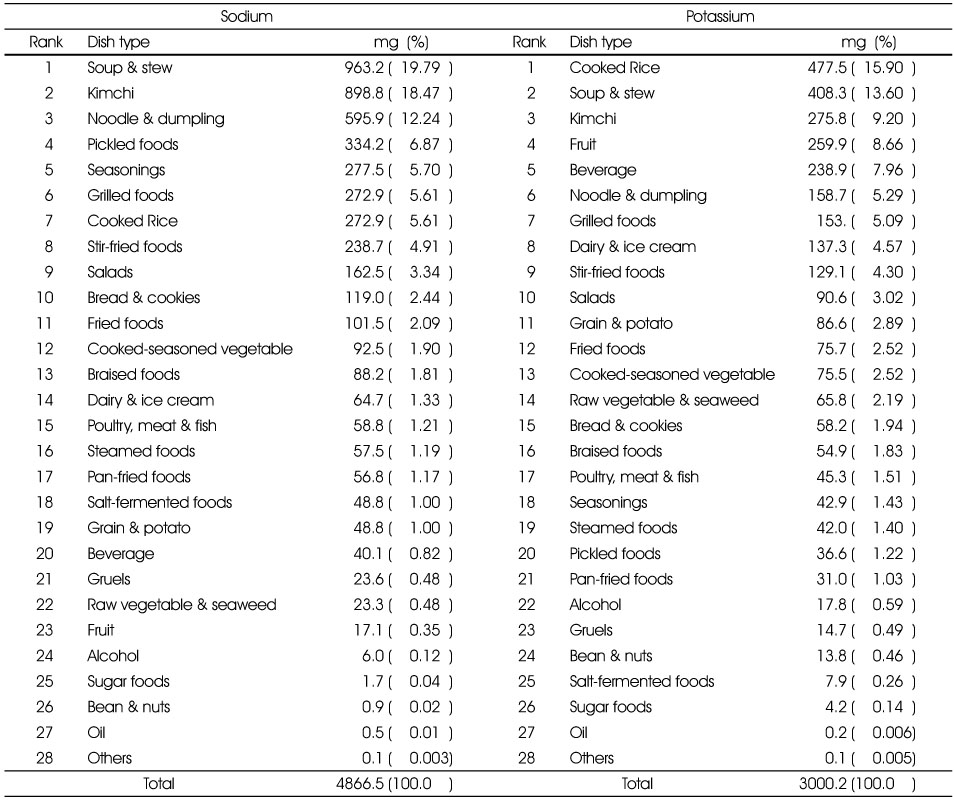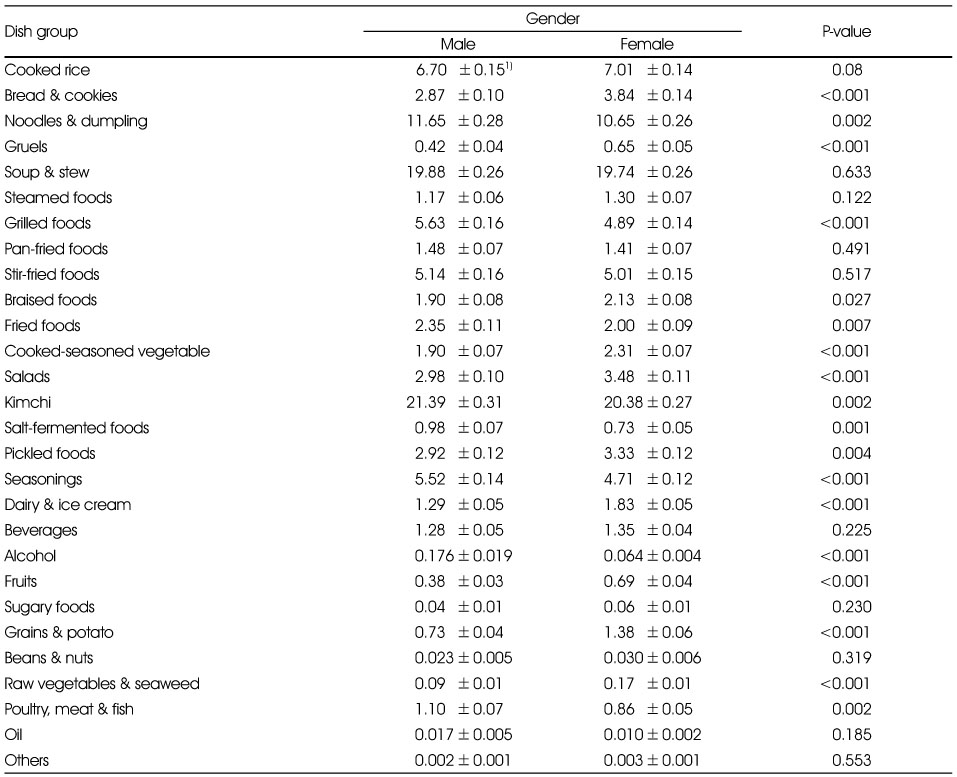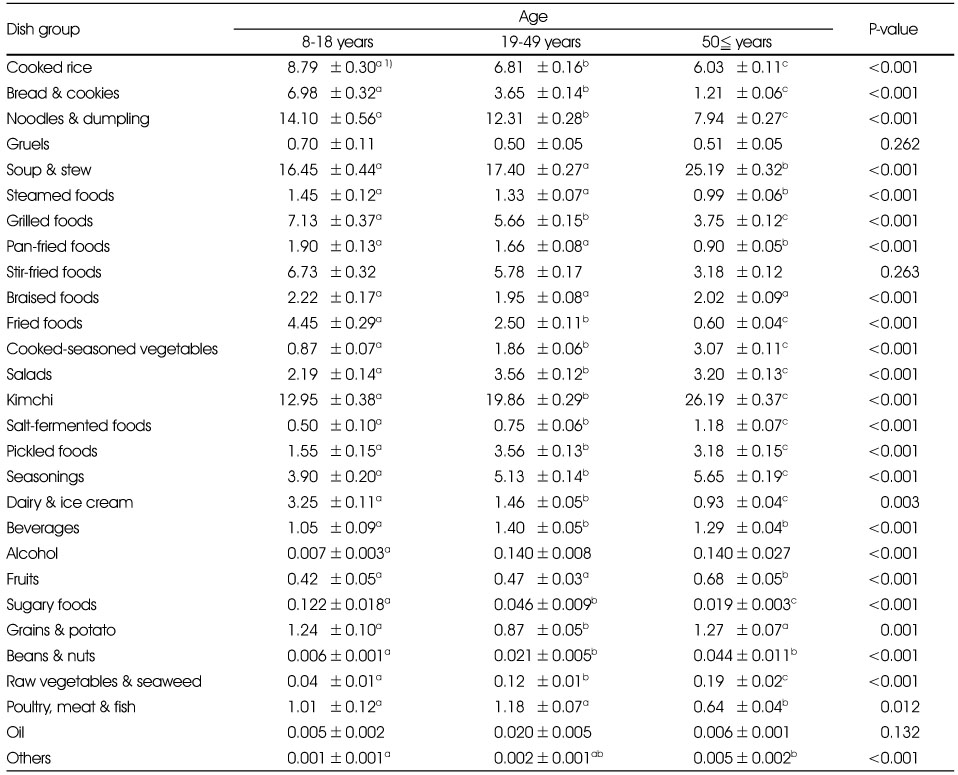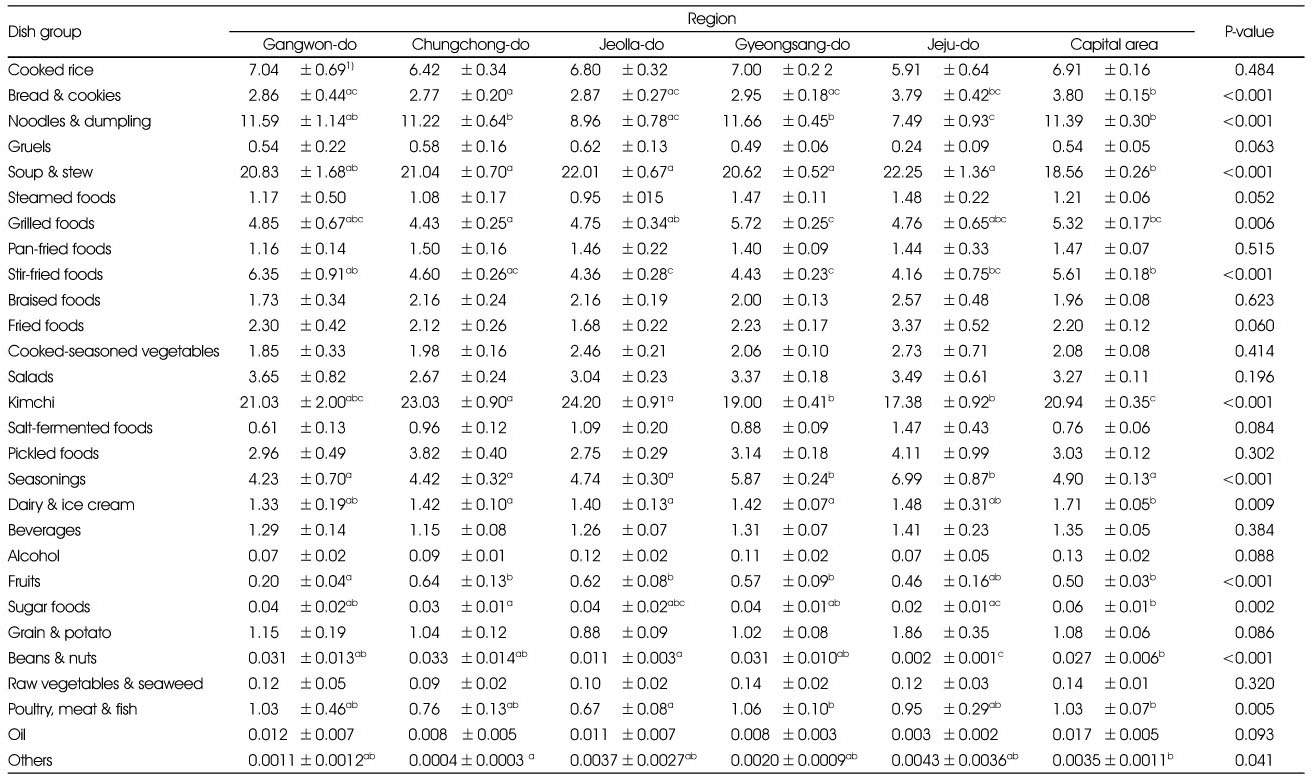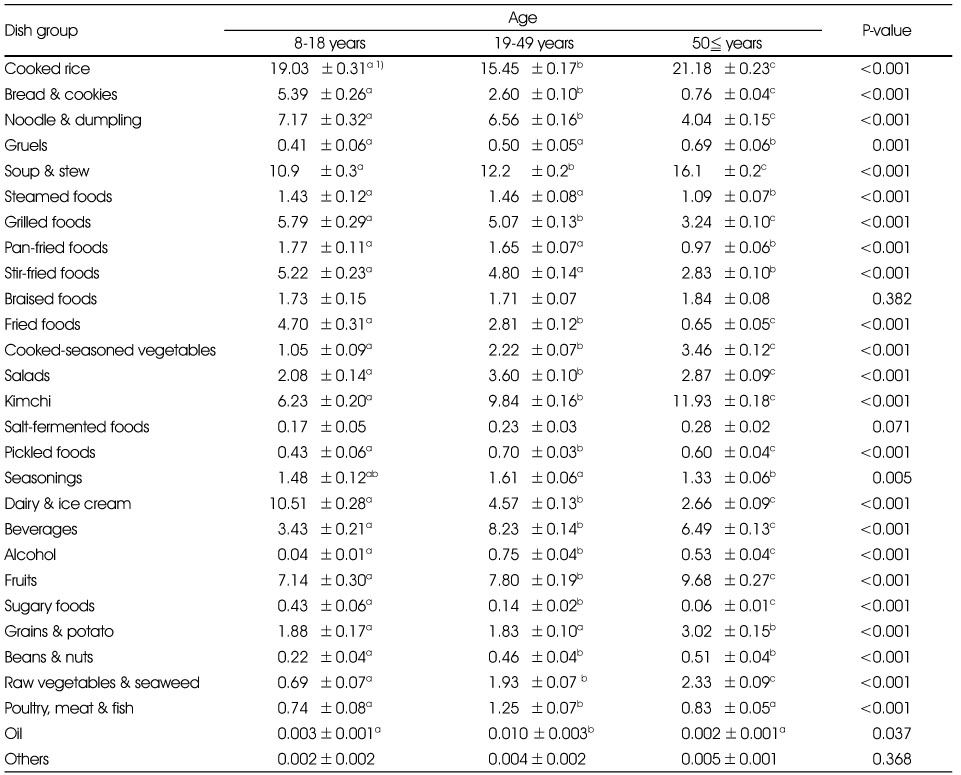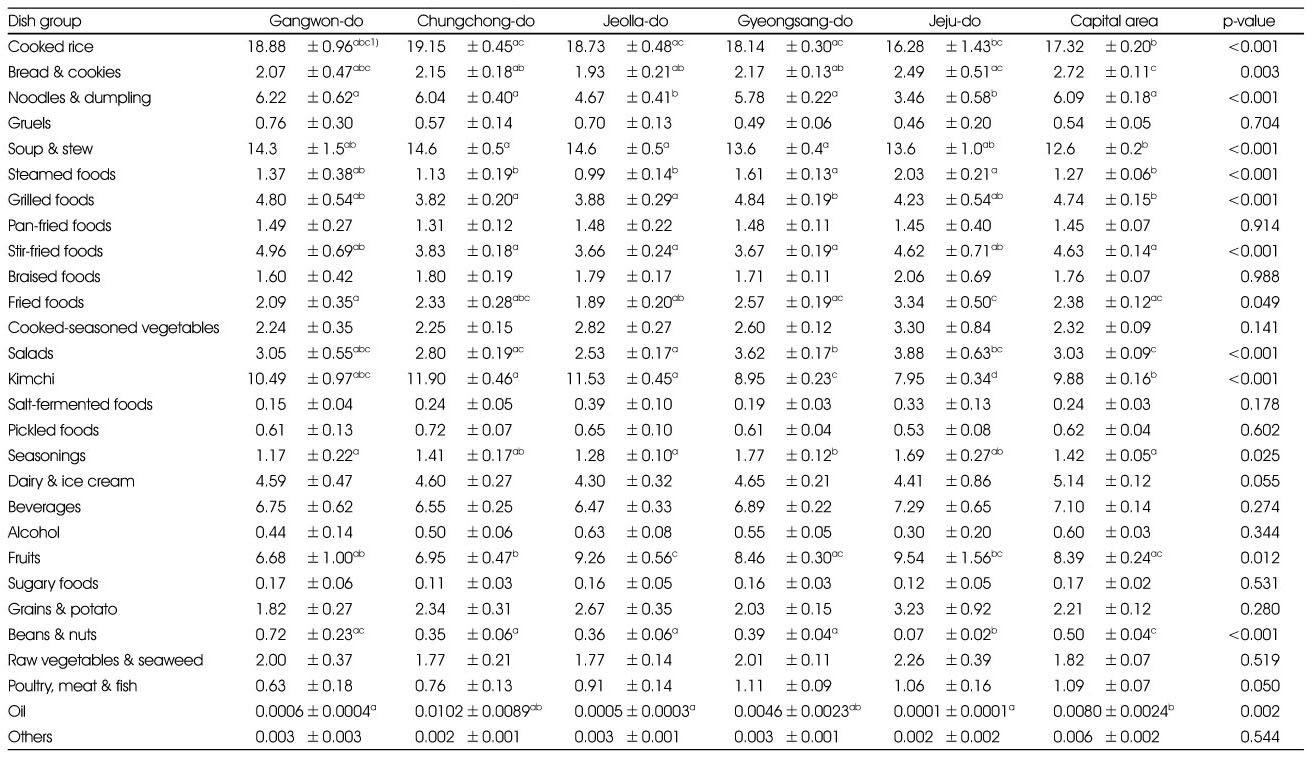References
1. Meneton P, Jeunemaitre X, de Wardener HE, MacGregor GA. Links between dietary salt intake, renal salt handling, blood pressure, and cardiovascular diseases. Physiol Rev 2005;85(2):679–715.
2. Shin HH. Dietary sodium intake and cardiovascular disease. Korean J Community Nutr 2002;7(3):391–393.
3. Cappuccio FP, Kalaitzidis R, Duneclift S, Eastwood JB. Unravelling the links between calcium excretion, salt intake, hypertension, kidney stones and bone metabolism. J Nephrol 2000;13(3):169–177.
4. Tannen RL. Effects of potassium on blood pressure control. Ann Intern Med 1983;98(5 Pt 2):773–780.
5. Prospective Studies Collaboration. Age-specific relevance of usual blood pressure to vascular mortality: a meta-analysis of individual data for one million adults in 61 prospective studies. Lancet 2002;360(9349):1903–1913.
7. Korea Centers for Disease Control and Prevention. Korea Health Statistics 2014 : Korea National Health and Nutrition Examination Survey (KNHANES VI-2) [Internet] Korean Ministry of Health and Welfare; 2014. [cited 2016 Dec 08]. Available from:
https://knhanes.cdc.go.kr/knhanes/index.do.
8. Yon M, Lee Y, Kim D, Lee J, Koh E, Nam E. Major sources of sodium intake of the Korean population at prepared dish level: based on the KNHANES 2008 & 2009. Korean J Community Nutr 2011;16(4):473–487.
9. Song BH, Hwang SH, Lee JD, Kim HJ, Chung HR, Moon HK. A study on the mineral contents of Korean common food and analytical methods 1. sodium. J Food Hyg Saf 1991;6(3):139–145.
10. Kwak HS, Kim MS, Lee YS, Jeong YH. Long-term change in consumer acceptance for salt reduced ‘udon noodle soup’ over repeated intake at home. Int J Food Sci Technol 2015;50(2):541–548.
11. Campese VM, Romoff MS, Levitan D, Saglikes Y, Friedler RM, Massry SG. Abnormal relationship between sodium intake and sympathetic nervous system activity in salt-sensitive patients with essential hypertension. Kidney Int 1982;21(2):371–378.
12. Moon HK, Park JH. Comparative analysis and evaluation of dietary intake between with and without hypertension using 2001 Korea National Health and Nutrition Examination Survey (KNHANES). J Nutr Health 2007;40(4):347–361.
13. Brunette MG, Mailloux J, Lajeunesse D. Calcium transport through the luminal membrane of the distal tubule. I. Interrelationship with sodium. Kidney Int 1991;41(2):281–288.
14. Hu G, Tian H. A comparison of dietary and non-dietary factors of hypertension and normal blood pressure in a Chinese population. J Hum Hypertens 2001;15(7):487–493.
15. Du S, Batis C, Wang H, Zhang B, Zhang J, Popkin BM. Understanding the patterns and trends of sodium intake, potassium intake, and sodium to potassium ratio and their effect on hypertension in China. Am J Clin Nutr 2014;99(2):334–343.
16. Umesawa M, Iso H, Date C, Yamamoto A, Toyoshima H, Watanabe Y. Relations between dietary sodium and potassium intakes and mortality from cardiovascular disease: the Japan Collaborative Cohort Study for Evaluation of Cancer Risks. Am J Clin Nutr 2008;88(1):195–202.
17. Noh HM, Park SY, Lee HS, Oh HY, Paek YJ, Song HJ. Association between high blood pressure and intakes of sodium and potassium among Korean adults: Korean National Health and Nutrition Examination Survey, 2007-2012. J Acad Nutr Diet 2015;115(12):1950–1957.
18. Dahl LK. Salt intake and hypertension, in Hypertension: Physiopathology and Treatment New York: McGraw-Hill Book Company; 1977. p. 548–559.
19. Lim HJ. A study on the sodium and potassium intakes and urinary excretion of adults in Busan. Korean J Community Nutr 2012;17(6):737–751.
20. Song DY, Park JE, Shim JE, Lee JE. Trends in the major dish groups and food groups contributing to sodium intake in the Korea National Health and Nutrition Examination Survey 1998-2010. Korean J Nutr 2013;46(1):72–85.
21. Fregly MJ. Estimates of sodium and potassium intake. Ann Intern Med 1983;98(5 Pt 2):792–799.
22. Kim YS, Paik HY. Measurement of Na intake in Korean adult females. Korean J Nutr 1987;20(5):341–349.
23. Son SM, Huh GY, Lee HS. Development and evaluation of validity of dish frequency questionnaire (DFQ) and short DFQ using Na Index for estimation of habitual sodium intake. Korean J Community Nutr 2005;10(5):677–692.
24. Korea Center for Disease Control & Prevention. Guideline for Nutrition Survey: Korea National Health & Nutrition Examination Survey 2010-2012[Internet] Ministry of Health & Welfare; 2012. [cited 2016 Dec 15]. Available from:
https://knhanes.cdc.go.kr/knhanes/index.do.
25. Ministry of Health and Welfare & The Korean Nutrition Society. Dietary Reference Intakes for Koreans 2015 Sejong: The Korean Nutrition Society; 2015.
26. Jackson SL, King S, Zhao L, Cogswell M. Prevalence of excess sodium intake in the United States - NHANES, 2009-2012. MMWR Morb Mortal Wkly Rep 2016;64(52):1393–1397.
27. Park YS, Son SM, Lim WJ, Kim SB, Chung YS. Comparison of dietary behaviors related to sodium intake by gender and age. Korean J Community Nutr 2008;13(1):1–12.
28. Son SM, Park YS, Lim HJ, Kim SB, Jeong YS. Sodium intakes of Korean adults with 24-hour urine analysis and dish frequency questionnaire and comparison of sodium intakes according to the regional area and dish group. Korean J Community Nutr 2007;12(5):545–558.
29. Korea Health Industry Development Institute. The Third Korean National Health and Nutrition Examination Survey (KNHANES III) 2005-Nutrition Survey(II) [Internet] Korean Ministry of Health & Welfare; 2006. [cited 2015 Dec 02]. Available from:
http://www.khidi.or.kr/kps.
30. Lee HS, Duffey KJ, Popkin BM. Sodium and potassium intake patterns and trends in South Korea. J Hum Hypertens 2013;27(5):298–303.
31. Bailey R, Parker E, Rhodes D, Goldman J, Clemens J, Moshfegh A, et al. Estimating sodium and potassium intakes and their ratio in the American diet: Data from the 2011-2012 NHANES. J Nutr 2016;Forthcoming.
32. World Health Organization. Diet, nutrition and the prevention of chronic disease. Report of a joint WHO/FAO Expert Consultation [Internet] WHO; 2003. [cited 2016 Dec 15]. Available from:
http://whqlibdoc.sho.int/trs/WHO_TRS_916.pdf.
33. Yi SS, Curtis C, Angell S, Anderson C, Jung M, Kansagra S. Highlighting the ratio of sodium to potassium in population-level dietary assessments: cross-sectional data from New York City, USA. Public Health Nutr 2014;17(11):2484–2488.
34. Du S, Batis C, Wang H, Zhang B, Zhang J, Popkin BM. Understanding the patterns and trends of sodium intake, potassium intake, and sodium to potassium ratio and their effect on hypertension in China. Am J Clin Nutr 2014;99(2):334–343.
35. Esmaillzadeh A, Kimiagar M, Mehrabi Y, Azadbakht L, Hu FB, Willett WC. Fruit and vegetable intakes, C-reactive protein, and the metabolic syndrome. Am J Clin Nutr 2006;84(6):1489–1497.
36. Shin D, Joh HK, Kim KH, Park SM. Benefits of potassium intake on metabolic syndrome: The fourth Korean National Health and Nutrition Examination Survey (KNHANES IV). Atherosclerosis 2013;230(1):80–85.



